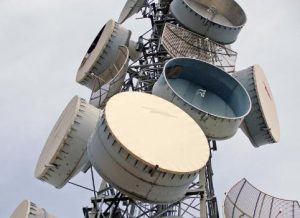How Do FR1 and FR2 Compare in 5G Technology?
Introduction

The rollout of 5G technology marks a significant evolution in mobile communications, bringing faster speeds, lower latency, and more reliable connections. A crucial aspect of this advancement is the introduction of two distinct frequency ranges: FR1 and FR2. Understanding how FR1 and FR2 differ is essential for grasping their implications on the performance, deployment, and applications of 5G networks.
What are FR1 and FR2?
FR1, or Frequency Range 1, covers the sub-6 GHz frequency bands. These bands are traditionally used in cellular communications due to their excellent balance between coverage and capacity. FR1 typically includes frequencies from 450 MHz up to 6 GHz.
FR2, or Frequency Range 2, includes the higher frequency bands from 24.25 GHz to 52.6 GHz. Known as millimeter waves (mmWave), these frequencies can carry massive amounts of data at very high speeds but have a much shorter range and higher susceptibility to physical obstructions.
Comparing Coverage and Performance
Coverage Capabilities: FR1 frequencies have a wider coverage area and better penetration through obstacles like buildings and trees. This makes FR1 ideal for urban, suburban, and rural areas where extensive coverage is required. On the other hand, FR2's higher frequencies face challenges such as higher attenuation and reduced penetration, limiting their effective range to more open, line-of-sight environments. This characteristic confines FR2 primarily to dense urban areas where small cells can be densely deployed.
Data Throughput and Speed: FR2 excels in delivering exceptionally high data rates that can reach up to several gigabits per second, much faster than FR1. This is due to the wider bandwidths available at these higher frequencies. FR1, while not capable of the same peak speeds, still offers significant improvements over 4G LTE, with capabilities reaching into the gigabit range under optimal conditions.
Applications of FR1 and FR2 in 5G Networks
The different characteristics of FR1 and FR2 tailor them to specific applications. FR1 is versatile, supporting a wide range of uses from mobile broadband to IoT applications, thanks to its extensive coverage and good balance of speed and latency. It’s particularly effective in providing service continuity across large areas and indoor environments.
FR2, with its high data rates, is ideal for high-demand applications that require large bandwidth. This includes virtual reality (VR), augmented reality (AR), ultra-high-definition video streaming, and other data-intensive services. However, due to its range limitations, FR2 is best used in areas with high user density and high demand for data, such as stadiums, convention centers, and business districts.
Strategic Deployment Considerations
The deployment of FR1 and FR2 must be strategically planned to leverage their strengths effectively. Network operators use FR1 for wide-area coverage and as the backbone of their 5G services. In contrast, FR2 is deployed in hotspots where extreme performance is necessary. This dual-band strategy ensures that users receive consistent service quality, whether they are in remote areas or crowded city centers.
Key Insights on FR1 and FR2 in 5G Technology
Understanding the distinct roles and capabilities of FR1 and FR2 is crucial for anyone involved in the planning, deployment, and management of 5G networks. As 5G technology continues to evolve and expand, the intelligent application of these frequency ranges will play a pivotal role in shaping the future of global connectivity, influencing how industries and consumers interact with technology. Through strategic deployment and technological innovation, both FR1 and FR2 will serve as foundational elements in realizing the full potential of 5G.